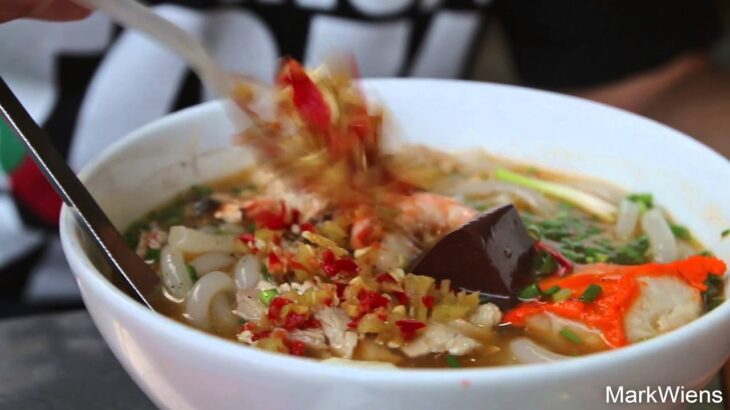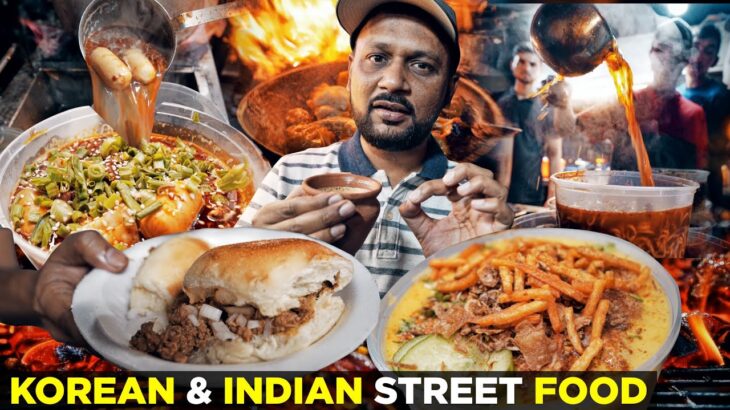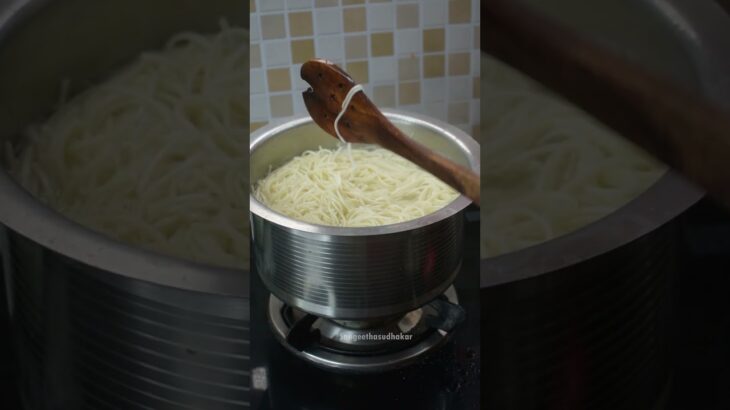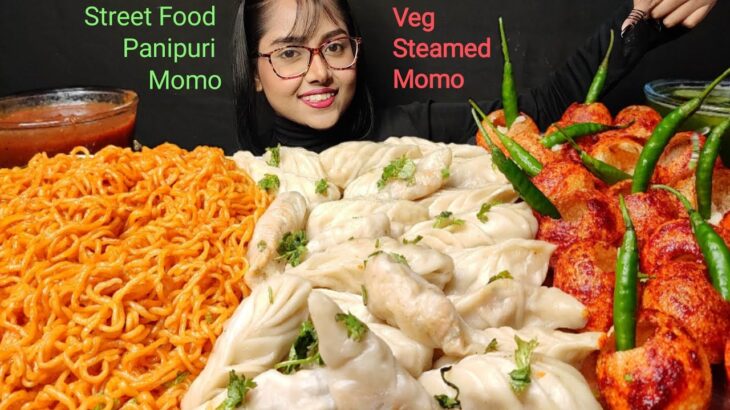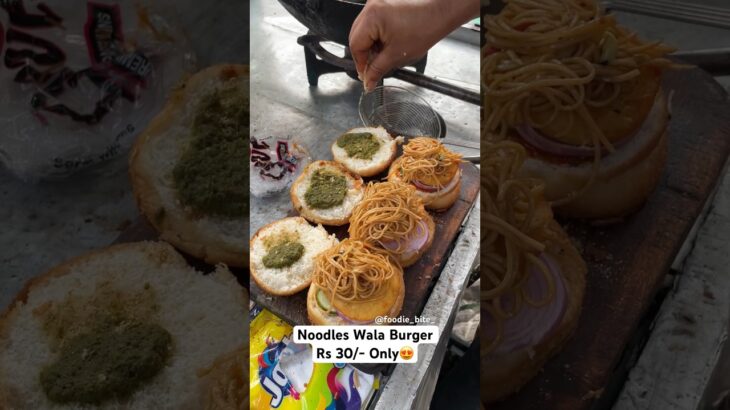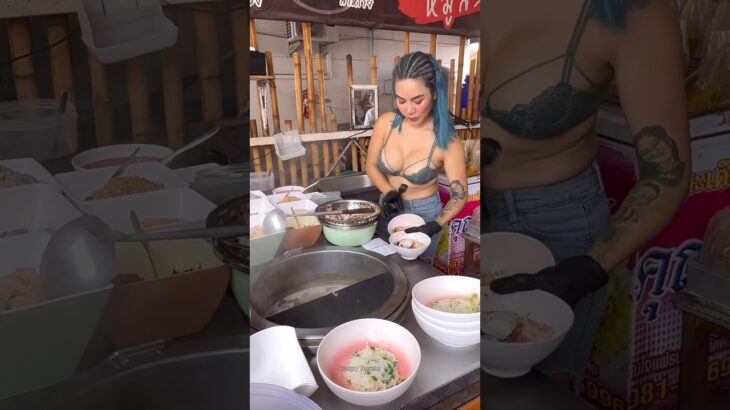Banh canh cua is yet another marvelous Vietnamese noodle dish. Get more details here: http://migrationology.com/2015/02/banh-canh-cua/
When I was in Saigon, my goal, as you may have already guessed, was to eat and learn as much about local Vietnamese food as I could (check out my full post of 25 must-eat Vietnamese dishes in Saigon here: http://migrationology.com/2015/02/vietnamese-food-guide-saigon/). One of dishes I was truly looking forward to eating was bánh canh cua, thick noodles in more of a gravy than a soup.
Thanks to a number of you who recommended it to me, and suggested I try a restaurant called Bánh Canh Cua Trần Khắc Chân, that’s where I had my very first taste of this delightful Vietnamese food. The restaurant was located a little outside of the center of Saigon, so in order to get there, my wife and I jumped in a taxi. The restaurant is only open starting in the afternoon until evening, and since I predicted it was going to be a busy type of dining environment, I decided to get there just as they opened, so they wouldn’t be too busy. We arrived to Bánh Canh Cua Trần Khắc Chân at about 3 pm, just an hour after they had opened for the day. Who eats at 3 pm? The answer is… lots and lots of people. When we arrived, the restaurant was already busy, there were just a few tables left, and luckily I managed to snag a table in the front on the sidewalk – I love the sidewalk environment… and it also makes for better light for food photos and food videos. As soon as arriving, my stomach began to growl, and I could hardly wait. In the front of the restaurant, within the glass cabinet was an attractive collection of crab and meats and quail eggs all on display and waiting to be dished out to hungry customers.
I ordered just their special, a bowl of Vietnamese banh canh cua. Banh canh is a type of Vietnamese noodle, made from both rice and tapioca flour. They are about the size of a Japanese udon noodles, thick and hearty, though the Vietnamese version is much more sticky and glutinous. The noodles were first placed into a bowl, then topped with a handful of boneless crab meat, a cube of blood, a crab meatball – which was in the shape of a crab itself, a shrimp, a quail egg, some slices of thin pork, and then finally a ladle of thick gravy, which made the sauce of this bowl of banh canh cua. Lastly, a sprinkle of green onions and a dash of pepper were added, and the bowl of goodness was delivered to my street food table – I couldn’t have been happier.
Before adding any condiments to my bowl of banh canh cua, I tasted the soup. It was thick and hearty, just as it looks, and had a beautiful crab flavor to it, not overpowering, but just soothing and comforting. The soup wasn’t too salty, nor spicy or sour. Instead it was just beautiful, with wonderful toppings and ingredients, and it was up to me to add extra condiments to make it the way I wanted it. I started with some lime juice to give it a sourness, and then proceeded to scoop on some chilies. Another delicious aspect of eating banh canh cua in Vietnam is that it’s served with sliced up Chinese donuts. And after watching everyone else dip a piece of Chinese donut into their noodle soup, I had to follow. Chinese donuts are not sweet, but they are instead fluffy and slightly salty, really light, and when I dipped it, it soaked up all that crab flavored gravy.
My banh canh cua at Bánh Canh Cua Trần Khắc Chân in Saigon, was not only a delicious bowl of noodles, but the restaurant has a wonderful atmosphere too – it’s really a great Saigon restaurant to try if you want to sample banh canh cua.
Thank you all for the recommendation.
Address: 87 Trần Khắc Chân, Ho Chi Minh City
Open hours: 2 pm – 9:30 pm daily
Prices: 35,000 VND ($1.62) per bowl, and then I had a plate of Chinese donuts for just – 3,000 VND, good price for great food
More info about this restaurant here: http://migrationology.com/2015/02/banh-canh-cua/
Music in this video courtesy of Audio Network
This video was made by Mark Wiens and Ying Wiens in Thailand: http://migrationology.com/blog & http://www.eatingthaifood.com/
► Get my free food updates: http://migrationology.com/food-news
